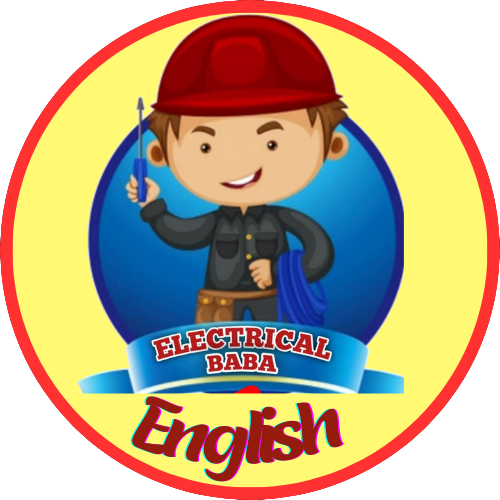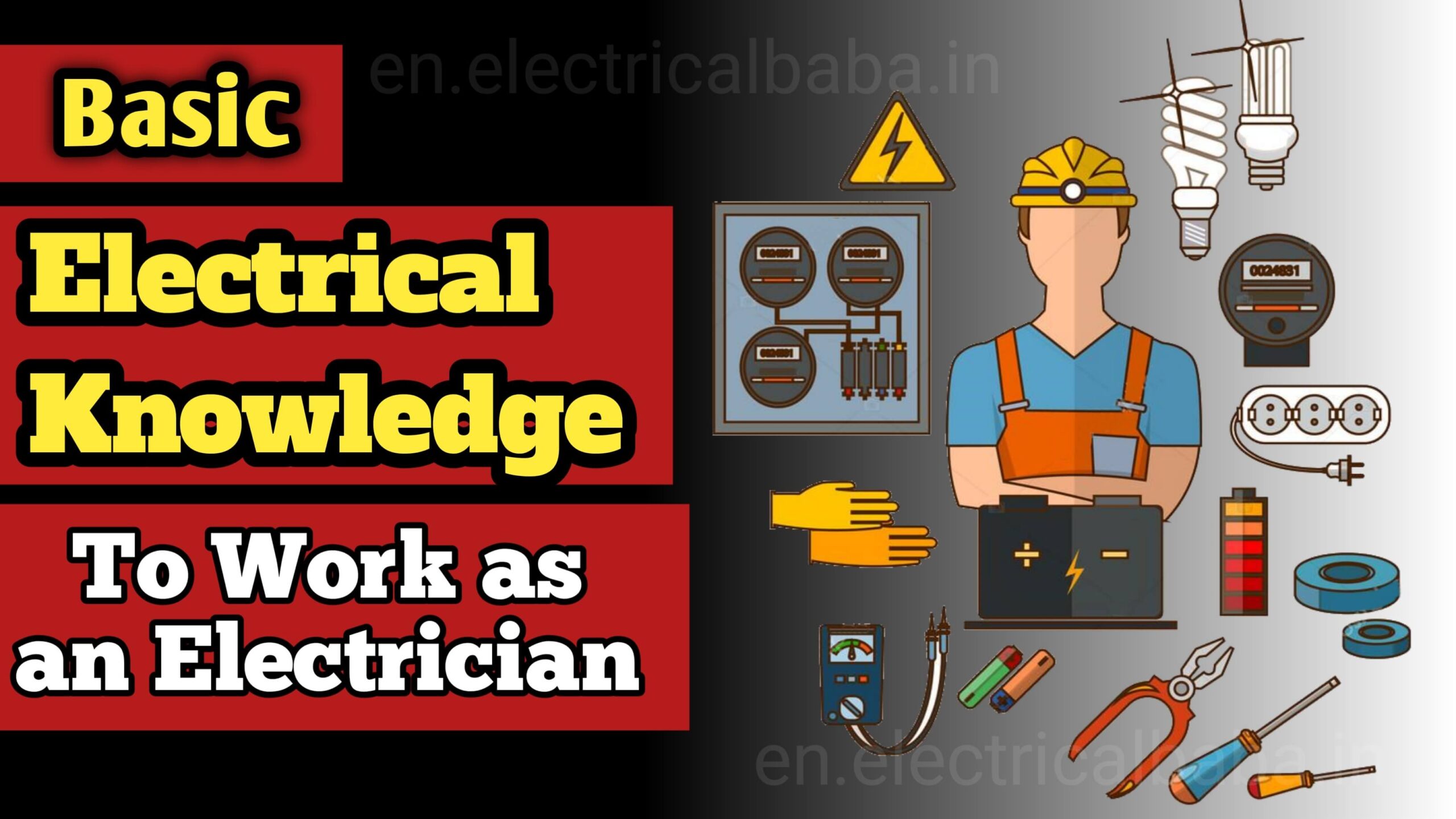Ladies and gentlemen, let me explain in simple terms what the role of an electrician entails.
what does an electrician do, and what’s the basic electrical knowledge they need?
An electrician’s primary role is to ensure that electricity flows correctly in homes and buildings. They achieve this by connecting wires, designing the electrical setup, and repairing any issues when things go wrong. In essence, they act as electrical experts, a bit like electric doctors, ensuring our appliances receive the right amount of power. Whenever there’s an electrical problem, they rely on their fundamental electrician work skills and basic electrical knowledge to diagnose and fix it.
Now, let’s talk about the function of three essential components in electrical systems: Phase, Neutral, and Earthing.
What is the function of Phase, Neutral and Earthing?
In our homes or offices, we typically have a single-phase supply, consisting of two main wires: one for phase and another for neutral. To power most single-phase devices, only one phase and one neutral connection are required. If either of these connections fails to reach the electrical equipment, that device won’t function properly.
In a single-phase electrical appliance, electric current flows through the phase wire and returns through the neutral wire to the power source. If this path becomes interrupted for any reason, the equipment will either turn off or not function due to an open circuit.
| Read Also... |
The phase wire is usually denoted in red, the neutral wire in black, and there’s also a green earthing wire. It’s important to note that the earthing wire isn’t used to power electrical equipment; it serves as a protective measure.
But why is earthing necessary when phase and neutral suffice? You can find detailed information about earthing by clicking on the provided link.
Now, let’s talk about electric appliances.
Demystifying Electric Appliances: What Are They and How Do They Work?
Electric appliances are the devices we use in our daily lives, such as lights, fans, geysers, and electric motors. All of these devices essentially act as resistors, converting electrical energy into other forms of usable energy when an electric current passes through them.
what are current, voltage, and resistance?
Current: Current refers to the flow of electric charge in a circuit. It’s measured in amperes (A) and symbolized by ‘I’. Think of it like the flow of water in a river. Electric current is the movement of electrons through a conductor, such as a wire. The greater the current, the more electrons are flowing per unit of time. In simple terms, it’s the rate at which electric charge moves through a wire.
Voltage: Voltage, often denoted as ‘V’ and measured in volts (V), represents the electric potential difference between two points in an electrical circuit. It’s comparable to the pressure in a water pipe that makes water flow. Voltage is what pushes electric charge, like electrons, through a circuit. In essence, it’s the force that drives the current. Higher voltage means more force pushing the electrons, which can lead to a stronger current.
Resistance: Resistance, symbolized as ‘R’ and measured in ohms (Ω), describes how much a material or component resists the flow of electric current. Think of it as a narrow stream compared to a wide river; a narrow stream (high resistance) impedes the flow more than a wide river (low resistance). Resistance is a property that varies with different materials and components. For instance, materials like copper have low resistance and are excellent conductors, allowing current to flow easily, while insulators like rubber have high resistance and inhibit the flow of electricity.
current is the flow of electric charge, voltage is the driving force behind that flow, and resistance is the opposition to that flow. These three concepts are fundamental to understanding how electricity works in circuits and are essential for anyone working with electrical systems.
When an electric device operates, it undergoes a transformation of electrical energy into various forms, collectively known as the Effects of Electric Current.
5 Effects Of Electric Current
- Physical Effects
- X-Ray Effect
- Heating Effect
- Magnetic Effect
- Chemical Effect
Here’s the information presented in table format:
| Effect | Description | Applications |
|---|---|---|
| Physical Effects | Our bodies conduct electricity. – Significant electric current through the body causes an electric shock. – May lead to increased body heat, blood burning, and severe consequences. | Medical treatments – Electric shock therapy |
| X-Ray Effect | High-voltage current through a vacuum tube generates X-rays. – X-rays are short-wavelength electromagnetic waves. | Medical imaging (internal organs) |
| Heating Effect | Electric current through a conductor generates heat. – Utilized in electrical appliances like heaters, soldering irons, and electric irons. | Space heating – Soldering and welding |
| Magnetic Effect | Electric current creates magnetic fields around a conductor. | Electric motors – Transformers – Electric bells |
| Chemical Effect | Electric current through an electrolyte separates its components. – Used in battery charging, home inverters, and electroplating. | Battery technology – Home power backup systems |
This table format provides a clear and organized overview of each effect, its description, and common applications.
Electricians need to understand which of these five effects is at play in the machines they work on. To excel in their profession, they also need a solid grasp of electric circuits.
So, in summary, the work of an electrician involves ensuring the proper distribution of electricity, understanding the effects of electric current, and being proficient in electrical circuits.
The blog post starts by talking about what electricians do. It says they make sure electricity goes where it should in homes and buildings. They do this by connecting wires, setting up electrical systems, and fixing things when they go wrong. Think of them as electric doctors who make sure your appliances get the right amount of power. When something goes wrong with electricity, they use their basic electrical knowledge to figure out and fix the problem.
Then, the post talks about three important electrical things: Phase, Neutral, and Earthing. These are like the superheroes of electricity because they make sure it flows safely and correctly in buildings.
After that, the post looks at electric appliances. These are the things we use every day, like lights, fans, and electric motors. They’re like magic because they change electricity into other kinds of energy we can use. It also explains three big electrical words: current, voltage, and resistance, in a simple way.
Finally, the post talks about the five effects of electric current. This is like a superhero team with powers like making us feel electric shocks or helping doctors see inside our bodies. Knowing about these powers is important for electricians to do their job right.
In short, the blog post tells new electricians about their job, important electrical stuff like Phase, Neutral, and Earthing, how electric appliances work, and what words like current, voltage, and resistance mean. It makes it easy to understand so new electricians can learn quickly.
You should also read this
| Home Page | Click here |
| Electrical Theory | Click here |
| Earthing | Click here |
| Electrical Equipment | Click here |
| Free Electrical Training | Click here |
| Transformer | Click here |

